#Japanese N5 Vocabulary
Text

People enjoyed the charts for English learners in Japan. Here, as promised, is one for Japanese language learners.
右 みぎ : right, right-hand side
左 ひだり : left, left hand side
横 よこ : horizontal (as opposed to vertical), lying down
side-to-side (as opposed to front-to-back), width, breadth
side (of a box, etc.)
beside, aside, next to
unconnected
側 そば : near, close, beside, vicinity, proximity, besides, while
隣 となり : next (to), adjoining, adjacent
後ろ うしろ : back, behind, rear
下 した : below, down, under, younger (e.g. daughter)
bottom
beneath, underneath
近く ちかく : nearly (e.g. "it took nearly one year"), close to
上 うえ : above, over, up
中 なか : inside, interior
among, within
#japanese langblr#learn japanese#nihongo#japanese vocabulary lists#japanese vocab list#langblr#japanese vocabulary#position words#japanese position words#Japanese N5 vocabulary
666 notes
·
View notes
Text

Background for my Anki
#ankiweb#one peice#japanese vocabulary#n5 vocabulary#japanese n5 vocabulary#japanese vocab list#nihongo#japanese langblr#studyblr#genki#wanikani
3 notes
·
View notes
Text
I learned it's easier to learn verbs in their ない form first, vs. their dictionary form first. Makes recognizing the difference between Godan and Ichidan verbs 100% easier and removes the need to "remember" the "hidden/fake/lying" verbs that parade as the other verb type. The trick to doing it is far easier and I hate how Genki teaches it in the book.
Leaving me with only having to learn the conjugation patterns for Ichidan, Godan, and Irregular verbs. Far, far easier.
#learning japanese#fountain pen#jlpt#jlpt n5#kanji#japanese#日本語#senchastudying#studying#studyblr#langblr#language#fountain pen ink#見#Verbs#Japanese Verbs#Japanese Vocabulary#japanese langblr
266 notes
·
View notes
Text
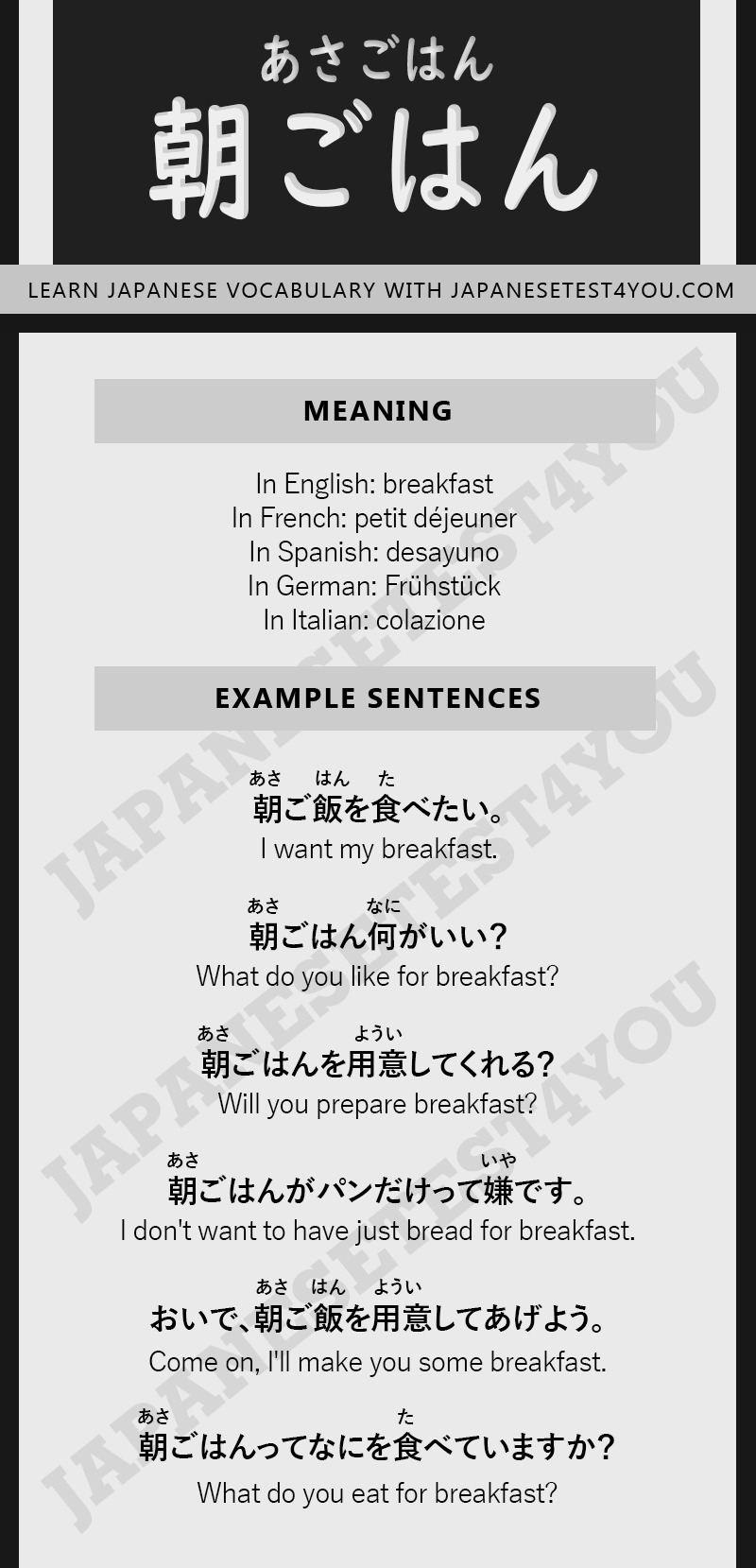
Batch download Japanese vocabulary infographics
#japanese#nihongo#japan#learn japanese#languages#jlpt#jlpt n5#japanese vocabulary#japanese langblr#japanese language#learning japanese
76 notes
·
View notes
Text
Slang Words
(。•̀ᴗ-)✧ vocabulary

words you might hear in small talk with friends
note: parents may find it unsuitable for younger children!
イカれる - to go crazy
なあ、この 運転士 (うんてんし)、イカれてるよ
Oh, the driver's a maniac. source
シケる - bad, distateful
あらやだ、このお煎餅もうシケってる
Yecch. This rice cracker is soggy. source
ブス - ugly
ナースと職員がブスばっか。
All the nurses and staff are ugly. source
ビミョー - kind of sucky, not good
ここのランチ美味しかった?
How was the lunch at this place?
ビミョ〜..
Not really… source
w - LOL
using "w" or "www" is similar to our "lol" or "lmao"
チャラい - flirtatious, player
あの人はチャラチャラしている。
That person is frivolous. source
腹減る (はらへる) - I'm hungry
食べなさい、おなかがへっているのでしょう。
Eat, for you are hungry. source
ひどい - it's terrible, you're mean
ひどい雨だった!
It was raining terribly! source
サイテー - worst
used colloquially to say something akin to English as "you suck"
サイコー - best, coolest
さいこうだぜ!
This is awesome, man!
どした - what's up?
can be also translated into: "what's wrong?" or "what happened"
マジで - seriously?
used in a surprised way like "are you kidding?!"
ヤバい - risky, wow
could also be used when you realize something. For example it's late and you say "shoot, we won't make it in time!" You'd use ヤバい to express "shoot"
めっちゃ - very
エマ、めっちゃ美人さんだね。
Emma.. You're really beautiful. source
this is a vocabulary list I found here! I searched for examples online and the source is linked whenever necessary ( ꈍᴗꈍ)
またね~@inkichan
꒰ა ˚₊ ✧・┈・╴﹕꒰ ᐢ。- ༝ -。ᐢ ꒱﹕╴・┈・𐑺 ‧₊˚໒꒱
#japanese#nihongo#studyblr#learn Japanese#learning Japanese#japanese langblr#langblog#japanese studyblr#日本語#study japanese#vocabulary#n5 vocabulary#japanese pod 101
38 notes
·
View notes
Text
Let's Learn Natively (TL :Japanese) | Reading
Why it's important to read as much native materials as you possibly can in your target language and where/how to start.
※ When learners first embark on their journey of picking up a new language, the first thing we do is familiarize ourselves with the alphabet, pronunciation, and other important innerworkings on the language. With Japanese, the first step is to learn hiragana and katakana. A lot of people stop in the middle of that because they feel that it's not worth learning the language if they have to learn that many letters. But what if you've made it past that point? Where do you go from there? Of course, we move on to basic grammar and sentence structure so that you can begin to understand why sentences are formed the way that they are. (and, of course, vocab words).
※ However, while textbooks and workbooks do teach us the way that sentences are formed, it's stiff. Of course, the purpose behind that is to make sure that you understand the basics before you move on to more native/nuanced versions of the structures. But once you're ready to do that, where do you go? Click below to keep reading:
★If you're ready/interested in reading native material, and you don't know where to start, I highly recommend trying out Natively. Think of this as a goodreads for Japanese learners.
★If you're concerned about picking a book or series that's too difficult or too long for you, the website has already taken that into account. The website is structured so that all of the books and series that are on there are added, graded, and reviewed by fellow Japanese learners. The grading system that is utilized goes from Level 0 to Level 41; the grades roughly correspond with JLPT levels (if you're preparing for the JLPT and are trying to prepare for the reading comprehension section). You can learn more about the grading system by clicking here.
★The website includes all sorts of books: textbooks, graded readers, light novels, manga, novels, children's books, short stories, and other kinds of books. When you click on a title or see it in the search results, the color coded grade will pop up next to it. These grades are user-determined. When users finish reading a book, we're prompted to grade the difficulty level in comparison to other books that we may have already read. In doing so, the difficulty level of the book might change when calculated in with other reviews. The point of this is to help fellow learners gauge what types of reads you find find difficult and which ones you find to be easy. Here's an example photo:
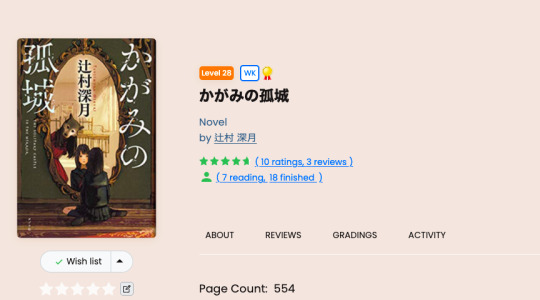
☞Caveat: don't feel discouraged if you found a book to be difficult even though it didn't seem like it would be. Everyone thrives in different areas and different subjects. Just because something was graded at N5 and you had difficulties with it at N3 doesn't mean anything--it might mean that it wasn't something to your liking. There are some series that I have difficulty with because of pacing or because I lacked interest in it.
❀ If you're worried about reading a book or series on your own and you're looking for friends to read and discuss about it with, come join us over on the discord and propose it as an option in the bookclub.
㉄ Can't find a particular book or series that you're looking for on the website? You can request for it to be added here.
★ The website is also equipped to let you "organize" your library into categories and track your reading progress. Additionally, you can make your library and reading progress private if you don't want anyone to see. As I'm currently using this blog to be as open as I can possibly be on my language learning journey, mine is made public. Feel free to check me out on the website.
★This is not sponsored, but if you receive a welcome message from Brandon, the owner and creator of the website, tell him that maobuchou sent you (that's me! ☺️). Brandon is really nice, so if there's anything that you're confused about or if you have suggestions for the website, he has an option for you to contact him.
★If you're interested in seeing what I'm currently reading, what I'm interested in reading next, and what I've graded thus far, click here to follow me (I'll follow back). Following other users allows you take a peek at what books they're reading. I also update my profile to say what book is also being read in the discord bookclub.
There will be more posts to come in the future about ways to become comfortable with reading in your target language.
#onigiristudies#japanese#learn japanese#nihongo#jlpt#resources#natively#jlpt n3#jlpt n2#jlpt n4#jlpt n1#jlpt n5#japanese grammar#japanese vocab#japanese langblr#learning japanese#langblog#japanese vocabulary#japanese studyblr
460 notes
·
View notes
Text
JLPT N5 - くなる and くする
This grammar point is very simple. You use くなる when the condition of something becomes a certain way by itself. On the other hand, くする is used when the condition of something is changed by an outside agent (either a person or a thing). In this post, let’s look at these two very basic constructions and how the Japanese works.
Here is your vocabulary:

【The Grammar】
The grammar is very simple. First, you take an adjective or a noun and change them to their adverbial forms. For example, the adjective 長い has an adverbial form of 長く. The noun ひま has an adverbial form of ひまに.
After you make the adverbial forms of the adjective or the noun, you just put it before either なる or する. That’s it!

We talked about the く connector in this post and about the adverbial に in this post.
I should point out that while this grammar point appears in most JLPT books and websites as くなる and くする, as you can see in the picture above, nouns don’t use く! For that reason, I choose to call this point adverb ✙ なる and adverb ✙ する.
【adverb + なる】
Here are some examples with なる:
① 熱が下がって、気分がだいぶ{よくなりました}。
=fever will go down and then feeling became considerably better
= My fever went down and then I felt much better.
② この仕事が終わったら、少し{ひまになる}と思います。
= when work finishes, a little bit, will become free, I think
= I think that when work finishes, I’ll have more time.
③ このごろ仕事が減って、前ほど{忙しくなくなった}。
= these days, work decreased and so as much as before, became not busy
= These days, I have less work and so I’m not as busy as before.
④ きみは{大人になったら}、{何になりたい}の。
= when you become an adult, what want to become
= When you grow up, what do you want to be (and explain)?
Some things to notice:
In example 1, the sense is that when the fever went down, the person’s mood got better by itself.
In example 2, the condition of having more free time arises naturally when work decreases. (ひま can have the connotation of having absolutely nothing to do and can be considered rude by some people. I use the word for myself sometimes, but I never seriously refer to other people as ひま.)
Concerning example 3, the negative form of 忙しい is with 忙しくない. If you want to make THAT into an adverb, it will become 忙しくなく. This was very difficult for me when I was just beginning Japanese.
Finally, Example 4 shows that the question word of 何 can be treated as a noun. This makes sense if you think of it as a placeholder for whatever answer the listener will give. Also, because the speaker uses the word きみ we know that the speaker and listener are close. It would make sense if it were a parent-child relationship. きみ is NOT used with people that you have just met or that you don’t know well!
【adverb + する】
Here are some examples with する:
⑤(父が子どもに)もっと部屋を{きれいにしなさい}。
= father to his child: a little bit more the room, make it clean
= Clean up your room a bit more.
⑥ このケーキ、ちょっと大きいから、{半分にして}ください。
= this cake, a bit big and so make it half please
= This cake is a bit (too) big so please cut it in half.
⑦ スカートを5センチぐらい{短かくして}ください。
= this skirt, about 5 centimeters make it short please
= Please shorten this skirt about 5 centimeters.
Notice that examples 5, 6 and 7 all include someone (other than the speaker) making a thing (a room, a cake, and a skirt) a different condition than the current one. This is when you will want to use adverb + する.
【Conclusion】
The grammar points of adverb ✙ なる and adverb ✙ する are pretty simple to understand. That is why they are considered Level N5. Adverb ✙ なる shows a person or a thing becoming a different condition by itself. Adverb ✙ する shows a person or a thing changing to a different condition by a different person or thing.
Thanks for reading, and see you next time!
Rice & Peace,
– AL (アル)
👋🏾
#japanese#japanese grammar#learn japanese#japanese language#japanese lesson#japanese study#japanese vocabulary#japanese vocab#japanese verbs#studying Japanese#japaneselessons#learnjapanese#japanese studyblr#japanese langblr#JLPT#JLPT N5#jlptn5#にほんご#日本語#日本語の勉強#一緒日本語#language#languages#language study#language studyblr#language blr#IsshoNihongo
388 notes
·
View notes
Text
What should I use after Genki? Books I used for N5 + N4
youtube
English sub included ⭐
#japanese#kanji#japanese language#learning japanese#japanese langblr#Jlpt#jlpt n5#jlpt n4#にほんごべんきょう#にほんご#nihongo#japanese book#learn japanese#japanese grammar#japanese vocabulary#Youtube
15 notes
·
View notes
Text
N5 exam sample sentences
新しい車ですね。- It's a new car.
電気をつけてください。- Please turn on the lights.
外で待ちましょう。- Let's wait outside.
あのホテルは有名です。- That hotel is well-known.
あそこでタクシーに乗りました。- I took a taxi there.
ここはうるさいです。勉強できません。- It's noisy here. I can't study here.
私はデパートに勤めています。= 私はデパートで仕事をしています。 - I work in a department store.
昨夜パーティーへ行きました。= 昨日の夜パーティーへ行きました。- I went to a party last night.
弟は部屋の掃除をしました。- My brother cleaned his room.
昨日はうちに帰って何をしましたか? - What did you do when you got home yesterday?
これは去年私が海で取った写真です。- This is a picture I took at the beach last year.
昨日、日本語の辞書を買いに行きました。- I went to buy a Japanese dictionary yesterday.
Grammar points: です・は/ね/を/で/に/へ/の particles・-てください・ましょう・past tense・できる・continuous tense・questions・S1 -て S2・に行く

#japanese#langblr#studyblr#vocabulary#japanese langblr#japanese language#sentences#n5#jlpt n5#japanese sentences#mine
20 notes
·
View notes
Text
*dictionary form+つもり(tsumori)*
Plan to/intend to
>>>>>>>>>>>>>>>>>>>>>>>>>>>>>>>>
Eg1. 明日、パーティーに行くつもりです
Ashita paatii ni iku tsumoridesu
I plan to go to a party tomorrow.
>>>>>>>>>>>>>>>>>>>>>>>>>>>>>>>>
Eg2. 卒業したら日本に留学するつもりです
そつぎょうしたら にほん に りゅうがくするつもりです
Sotsugyoushitara Nihon ni ryuugakusuru tsumoridesu
After graduating I plan to study in Japan.
>>>>>>>>>>>>>>>>>>>>>>>>>>>>>>>>
ない form+ つもりです OR dictionary form+ つもりはない。
Don't intend to/don't plan to
~~~~~~~~~~~~~~~~~~~~~~~~~~~~~~~~~~~~~
夏休みの間に勉強しないつもりです
Natsuyasumi no Aida ni benkyoushinai tsumori desu.
OR 勉強するつもりはない
Benkyousuru tsumori wa nai
(I don't intend to study during summer break)
2 notes
·
View notes
Note
这是一个中文的句子!
そして、これは日本語の文です。
中国語は上手です!…と思います。読んで書いて出来ないから、認めて出来ません。
#I'm having fun with this#gimme more chances to flex my japanese#I have to study for my N5 test on December#I think the grammar is all correct but I probably am not using the vocabulary and constructions I should be#jisho.org helped me a bit but this is mostly my own sentences
0 notes
Text



The Body Words
Kanji Hiragana/Katakana Meaning
顔 かお Face
髪 かみ Hair
髪の毛 かみのけ Hair
頭 あたま Head
耳 みみ Ear
耳たぶ みみたぶ Earlobe
頬 ほお ほほ Cheek
頬っぺた ほっぺた Cheek
額 ひたい Forehead
お凸 おでこ Forehead
眉 まゆ Eyebrow
目 め Eye
瞼 まぶた Eyelids
睫毛 まつげ Eyelashes
鼻 はな Nose
鼻孔 びこう Nostril
口 くち Mouth
唇 くちびる Lips
歯 は Teeth
歯茎 はぐき Gum / Tooth Ridge
舌 した Tongue
顎 あご Chin / Jaw
体 からだ Body
首 くび Neck
喉 のど Throat
肩 かた Shoulder
腕 うで Arm
脇の下 わきのした Armpit
肘 ひじ Elbow
手 て Hand
手首 てくび Wrist
拳 こぶし Fist
指 ゆび Finger
親指 おやゆび Thumb
人差し指 ひとさしゆび Index Finger
中指 なかゆび Middle Finger
薬指 くすりゆび Ring Finger
小指 こゆび Little Finger
爪 つめ Fingernail / Toenail
胸 むね Breast / Chest
お腹 おなか Stomach
腹 はら Stomach
臍 へそ Belly Button
腰 こし Waist / Hips
太股 ふともも Thigh
脹脛 ふくらはぎ Calf
膝 ひざ Knee
膝頭 ひざがしら Kneecap
足 あし Foot / Leg
足首 あしくび Ankle
踵 かかと Heel
爪先 つまさき Toe / Tiptoe
背中 せなか Back (of Body)
お尻 おしり Buttocks
肌 はだ Skin
骨 ほね Bone
筋肉 きんにく Muscle
肺 はい Lung (organ)
心臓 しんぞう Heart (organ)
胃 い Stomach (organ)
#langblr#japanese langblr#japanese vocabulary#learn japanese#nihongo#japanese vocabulary lists#japanese vocab list#N5 vocabulary#Japanese N5 Vocabulary#body part words
258 notes
·
View notes
Text
https://quizlet.com/707299175/n5-51-100-flash-cards/?i=7weg4&x=1jqY
Reading ability. Kanji>hiraganaEnglish
https://quizlet.com/708748831/n5-51-100-flash-cards/?i=7weg4&x=1jqY
Recall ability English> kanji hiragana
0 notes
Text

Batch download Japanese vocabulary infographics
#japanese#nihongo#japan#learn japanese#languages#jlpt#japanese vocabulary#jlpt n5#nihon#infographics
55 notes
·
View notes
Text
Podcast Review: Let's Talk in Japanese

Podcast Title: Let's Talk in Japanese!
Ease of Listening: ★★★★★
Length of Episodes: ★★★★★
Level of Engagement: ★★★★★
Episode Frequency: ★★★★★
Overall: ★★★★★
Today I will be reviewing the Let's Talk in Japanese! podcast by Tomo-sensei. This podcast is aimed at Japanese learners who want more chances to listen to spoken Japanese but using vocabulary and grammar that they can understand. The podcast is for levels N1 (the highest level) to N5 (the lowest level), but I would say that a majority of the content is focused on level N3 or N4.
Do I currently listen to this podcast?: Yes, I like this podcast a lot and listen to it frequently.
General Overview
Good For Levels: Beginner | Intermediate | Advanced
In this series, Tomo, a Japanese teacher for foreign students, discusses in Japanese only a variety of topics either selected by him or suggested by the audience. These can range from topics about daily life to JLPT related topics. He understandably discusses topics that he has a decent knowledge of, and admits when there are gaps. He is quite faithful to the level of each episode, which he indicates at the end of the episode title, so you can be sure that you will be able to understand the majority of the content or challenge yourself as the case may be.
Length of Episodes ★★★★★
The podcasts are usually around 10-15 minutes long. This is ideal for a quick listen when you are short on time or just want to supplement your studies, but may not be ideal if you are looking for something a bit longer. I usually listen to two or three podcasts in a row during my commute and feel like I've spent my time well. The short length can be useful if you are not interested in a particular topic, because you can make it to the end of the episode without losing interest and a new topic will come up with the next episode.
Level of Engagement ★★★★★
Although this is just one person (Tomo) talking throughout the podcast, he is engaging because he speaks as though he is talking to a small group. I find it engaging because I can, in the privacy of my room or car, reply to him when he poses questions, or make a response if I am surprised by what he says, etc. Even though it's not interactive per se, it can feel interactive because of the way he speaks in his podcast. I find myself engaged in most episodes, and the shorter length means I don't have to work as hard to stay engaged through the entire episode.
Episode Frequency ★★★★★
New podcasts come out about weekly, and sometimes more frequently than that. I have heard that he works very hard to put out the podcasts so frequently, and I think this intense schedule plus the large archive of material means you can listen almost indefinitely to this podcast.
Overall ★★★★★
This podcast is completely in Japanese and designed by a Japanese teacher for foreigners learning Japanese, and has material for everyone from beginners to advanced learners. The shorter episodes mean you can fit it into a busy schedule, and the JLPT labels mean you can pick and choose episodes based on your own level and be confident that you will get what you expect. I highly recommend this for those looking to improve their listening skills.
#日本語#japanese language#japanese langblr#japanese studyblr#langblr#studyblr#japanese podcast#podcast review#tokidokitokyo
151 notes
·
View notes
Note
hi!! where did you learn Japanese? 🥺 ive only just started so im trying to improve as i go. any tips?
hello! so, i self-studied for about 8 months before i started studying it at university!
my tips are!
-learn hiragana and katakana make sure they’re solid! probably take about 3 weeks! but you might’ve already learnt them.
-increase input of the language! so watch and listen to more japanese, music etc. when i first started studying i would play this city pop playlist and this one, so now whenever i play it i can focus on japanese and study cos my brain is used to hearing it when studying it if that makes sense!
-i used memrise for a few months but Duolingo is good too, just to slowly implement the language before learning any grammar! in this time i suggest starting to learn some light vocab, like Quizlet>> N5 japanese vocabulary.
- to start learning grammar i started with the app, tae kim’s guide to japanese and then some minna no nigongo books, i also used an italki tutor for a few months (quite cheap language teacher online over video call).
- my other tips are make sheets of basic things like hello, how are you, the weather is nice etc, i feel like it really helps you get used to the basic structure of sentences and i felt like memrise was really good at this and that’s why i suggest using it over Duolingo because it teaches you things like “he likes books etc.” “cherry blossoms are pretty etc etc.”
- then when you’re feeling good with the basics start with some kanji! i was lucky enough to study japanese in lockdown where I could study 2-4 hours a day.
i will now show you all the resources i used like apps and books!
-best app for learning katakana and kanji!
-the Japanese app is great and I still use it now! so, i input kanji I’ve learnt onto a list and you can study it in flash cards! i even have a list for words and phrases i hear in anime and dramas and films, and interesting dictionary sentence examples.
-the grammar guide i used loosely at first and the vocab stack i used!
- the yellow textbook is the most important bc it has the grammar summarised
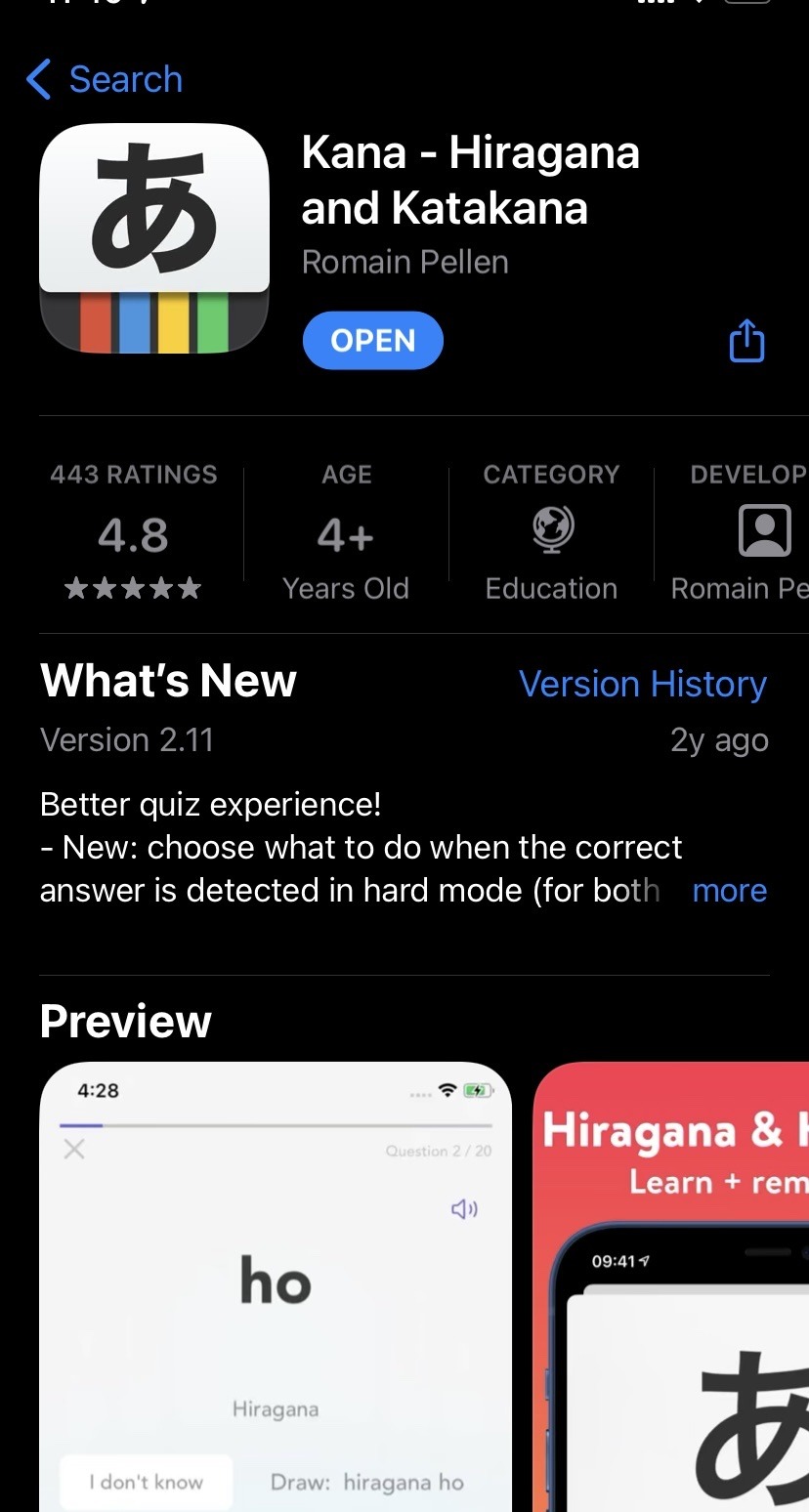

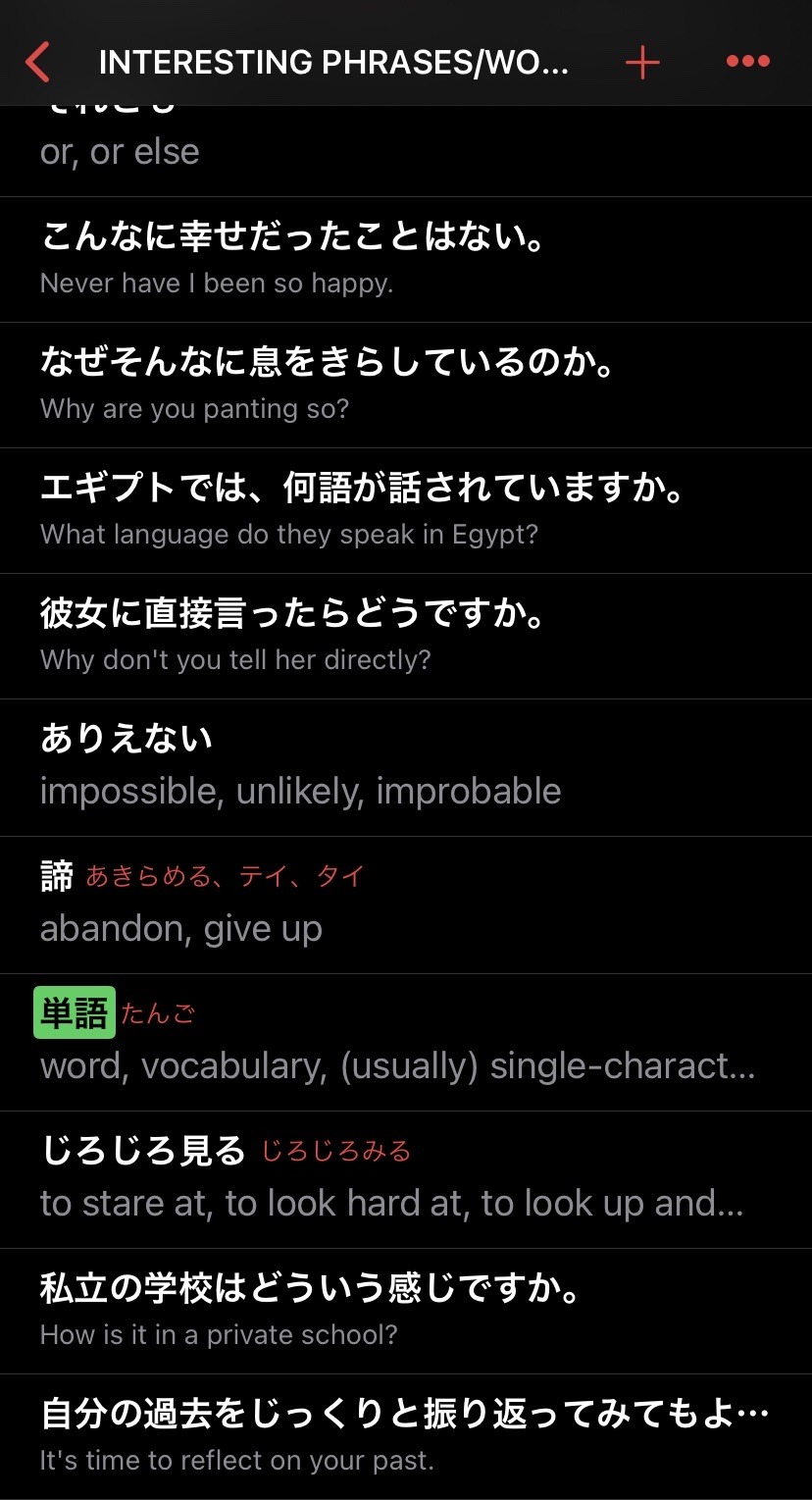
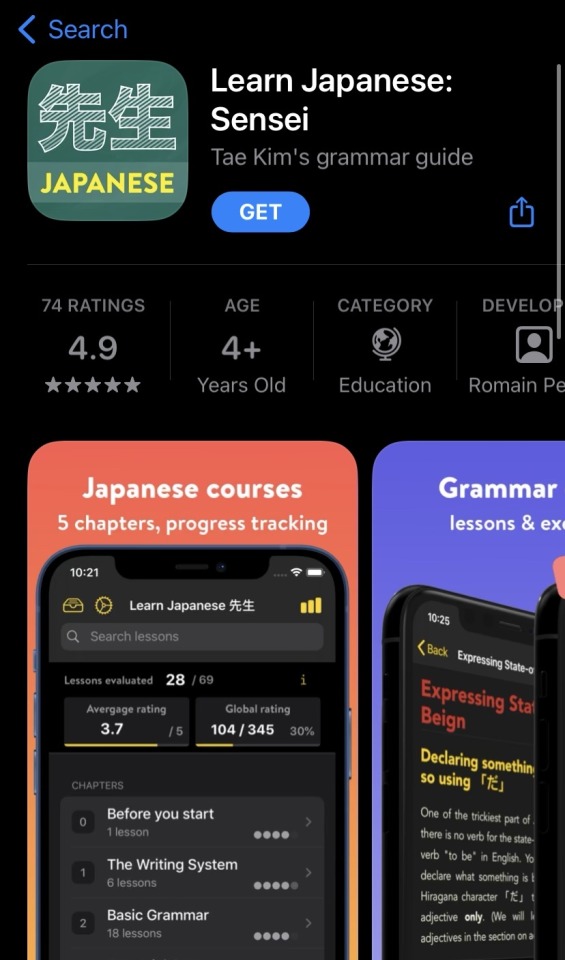

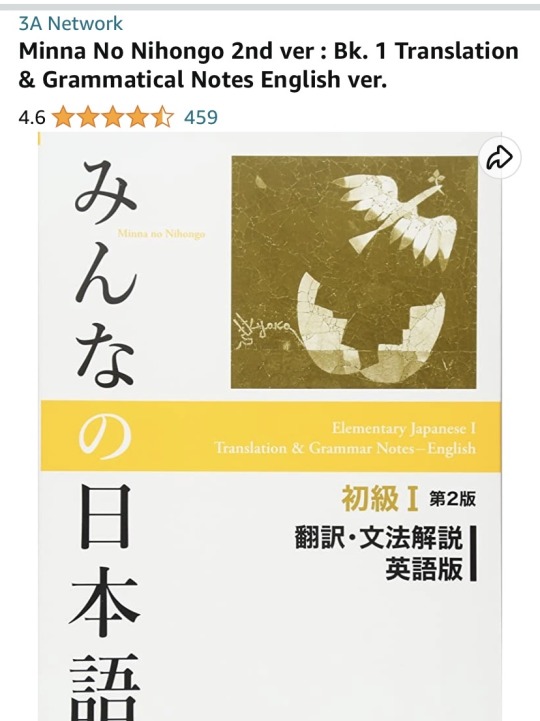
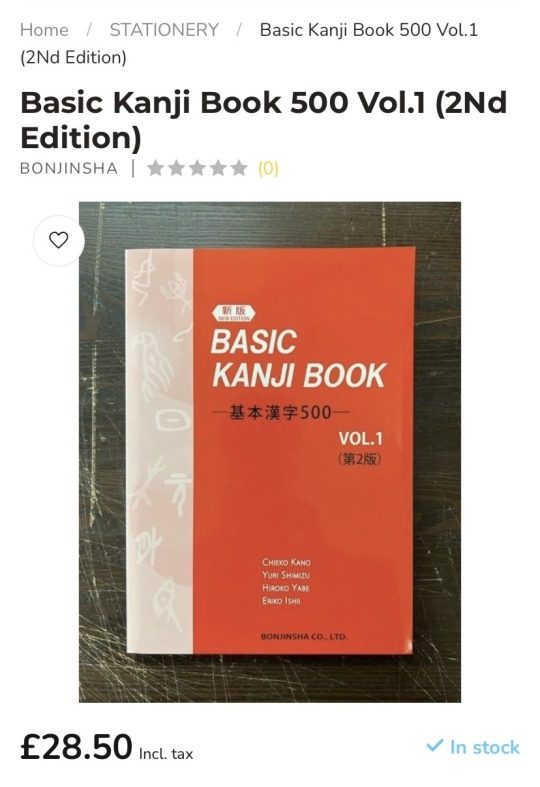

if you’d like to see what my notes looked like in the beginning or anything else please let me know I’d be happy to help! try your best! I’m not sure of your experience of language learning but it’s not always linear and some days you feel you’ve learnt so much and others like you’re set back and there’s a wall, if you feel a wall, take a break, take a few days, a week, your brain is like a sponge and I always feel like it soaks in and then you can continue when you take a break hehe, good luck <3
#anonreply💌#lourdes answers!#lourdes speaks on…!#learning Japanese!#japanese learning#Japanese learning tips
57 notes
·
View notes